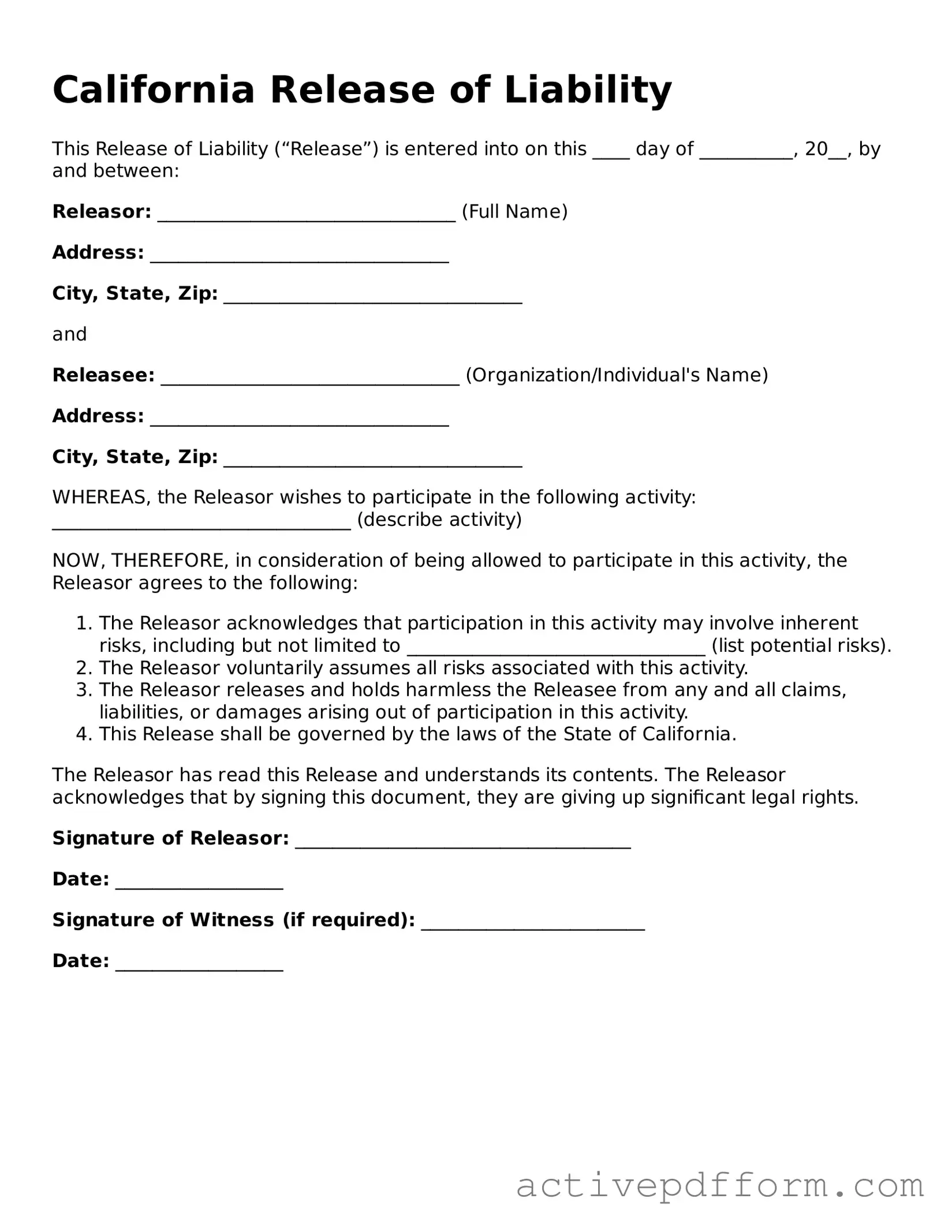California Release of Liability
This Release of Liability (“Release”) is entered into on this ____ day of __________, 20__, by and between:
Releasor: ________________________________ (Full Name)
Address: ________________________________
City, State, Zip: ________________________________
and
Releasee: ________________________________ (Organization/Individual's Name)
Address: ________________________________
City, State, Zip: ________________________________
WHEREAS, the Releasor wishes to participate in the following activity: ________________________________ (describe activity)
NOW, THEREFORE, in consideration of being allowed to participate in this activity, the Releasor agrees to the following:
- The Releasor acknowledges that participation in this activity may involve inherent risks, including but not limited to ________________________________ (list potential risks).
- The Releasor voluntarily assumes all risks associated with this activity.
- The Releasor releases and holds harmless the Releasee from any and all claims, liabilities, or damages arising out of participation in this activity.
- This Release shall be governed by the laws of the State of California.
The Releasor has read this Release and understands its contents. The Releasor acknowledges that by signing this document, they are giving up significant legal rights.
Signature of Releasor: ____________________________________
Date: __________________
Signature of Witness (if required): ________________________
Date: __________________
